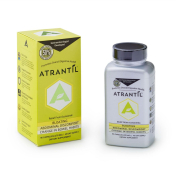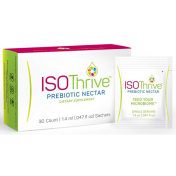Bacteria: friend or foe?
Billions of bacteria live in your stomach, which together with viruses, fungi and yeasts, form your microbiome or intestinal flora. Your stomach is full of life. All these bacteria do a lot of good for your health. But sometimes something goes wrong without you realizing it. However, it can have a major effect on your health. How important is your intestinal flora? And how do you take good care of it yourself? We will tell you in this blog.
Resident and transient gut flora
There are many different types of gut bacteria; estimates range from 100 to 1000 different species. Your gut microbiota consists of resident and transient bacteria. The resident microorganisms live in your gut and they take care of numerous essential physiological processes in your gut. The transient flora come from food and generally appear to have no function. They occur temporarily in your gut and can cause symptoms when imbalanced. As you get further into the gut, the number of intestinal bacteria increases. Most of these live in your colon. They live there for 99% without oxygen, so anaerobic. Before birth your intestines are sterile. Only from the first days of life the intestinal flora develops.
The importance of bacteria
The bacteria in your gut flora are busy microorganisms that work for your health all day long.
- They help digest your food and break down indigestible substances.
- They synthesize vitamins.
- They synthesize substances that protect you from pathogens such as beta-defensin 2 and secretory IgA.
- They strengthen your mucous membranes.
- They produce short-chain fatty acids that fuel your intestinal epithelial cells, promote your bowel movements, and are anti-inflammatory.
- They provide detoxification of foreign substances.
Your personal fingerprint: your enterotype
No microbiome is the same, even though we all have a considerable overlap of different microorganisms. The mutual composition and proportion of bacteria is different for everyone. Your microbiome is like your unique fingerprint. According to research, three types can be broadly distinguished, in which one type of bacteria predominates. We call these the enterotypes.
- Enterotype 1: with a large number of Bacteroides
- Enterotype 2: with a strong Prevotella colonization
- Enterotype 3: with a Ruminococcin flora
Enterotype 1: the carnivores
If enterotype 1 predominates, then your gut flora is characterized by high numbers of Bacteroides. A bacteroid flora is good at producing energy from polysaccharides, animal proteins and saturated fats. Often this type predominates among people who eat meat regularly and you will rarely find it among vegetarians and fruit and vegetable lovers. Bacteroid species synthesize vitamins such as various B vitamins and vitamin C. They also influence the absorption of nutrients in the gut. And together with the Bifidobacterium group, they produce fatty acids. They need vitamin B5 and high-fiber foods for their growth. This enterotype is common among overweight people.
Enterotype 2: the grain eaters
If your gut flora is characterized by a strong Prevotella colonization, then you probably eat a lot of grains. This is because the Prevotella bacteria increase as you eat a lot of grains. However, they decrease in numbers when grains are eliminated. An excessive number of Prevotella bacteria can have adverse effects on the intestinal wall. The enterotype is therefore often seen among people with intestinal problems.
Enterotype 3: the vegetable eaters
If enterotype 3 is dominant, then there is a flora with a lot of Ruminococcin. Ruminococcin digests a lot of plant materials. So this type needs a lot of vegetables (fibers). And it is therefore important that you also get those in order to continue to meet the needs of this flora. This type contains the bacterium Akkermansia muciniphila, which inhibits obesity and is therefore often found in people with a low body weight.
Far from everything is known about the nature of the enterotypes. However, they do seem to be influenced by adjusting your eating habits over a long period of time. Eating plenty of fiber and adding benign bacteria may be beneficial.
Make sure you have a good balance in your stomach
The composition of your gut flora depends a lot on what you eat. If you eat unilaterally, so will your gut flora. After all, as you’ve read, it’s those bacteria that increase in number that get the nutrition that’s right for them. Bacteria that do not get nutrition can even disappear from your intestinal flora. So guard against lopsided growth in your gut. As soon as certain bacteria get the upper hand, they can start causing complaints. Where they used to be your friends, their numbers can turn them into ‘the bad guys’. Shifts in the composition of your microbiome can be related to numerous (chronic) conditions.
Variation is the magic word
A healthy microbiome is a diverse microbiome. So how do you take care of that? Very simple. The healthier and more varied your diet is, the more nutrition and fiber you offer your different gut bacteria, and the richer your gut flora becomes. Because of this variation, you also get many different micronutrients such as vitamins, minerals and phytonutrients. This supports your health.
A good guideline is to eat 25 different kinds of vegetables, fruits, herbs, nuts and seeds a week. You have to make an effort to do this, but it will do your stomach a lot of good. So also keep in mind that if you don’t eat certain food groups, you won’t get the nutrients from those foods either. A diet rich in vegetable products can be complemented with (limited) organic meat, poultry and oily fish.
You can see your microbiome as the bridge between food and nutrients. And bacteria are not directly good or bad. In conclusion, if you take good care of your intestinal flora, your microbiome will take good care of you!







